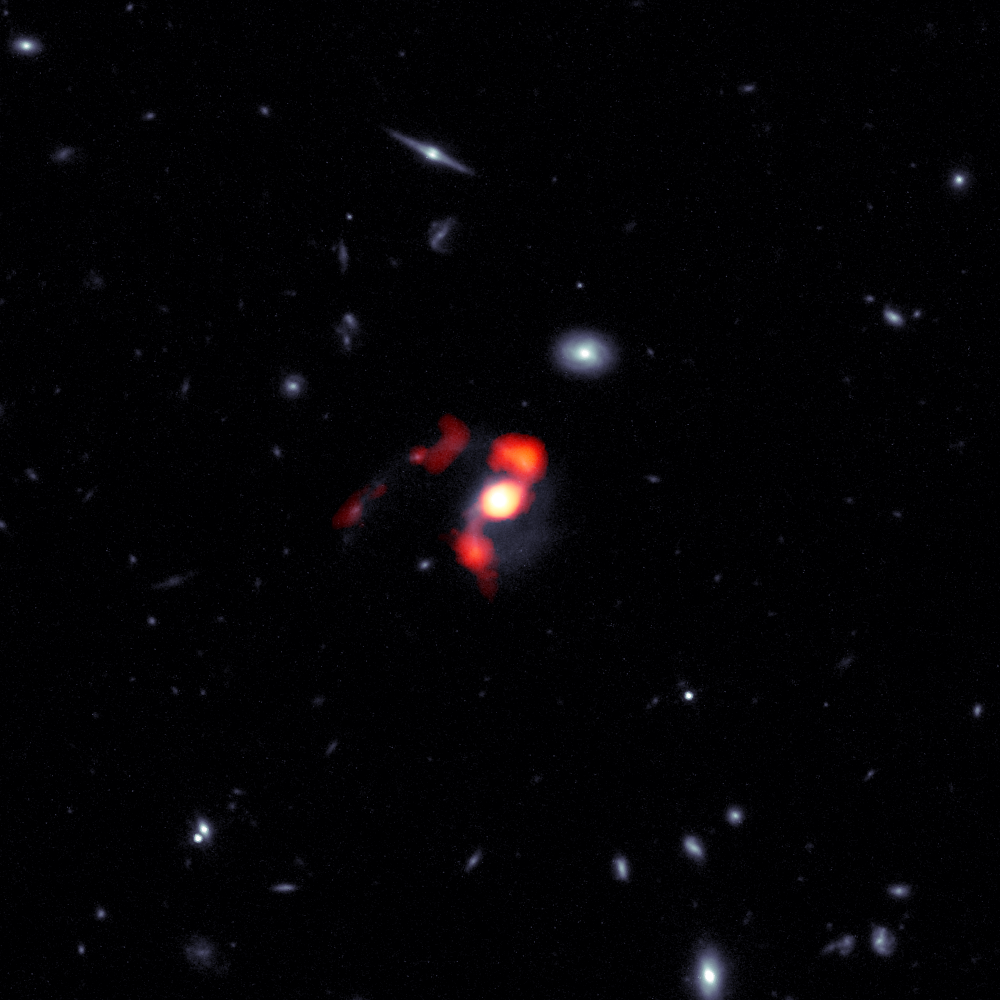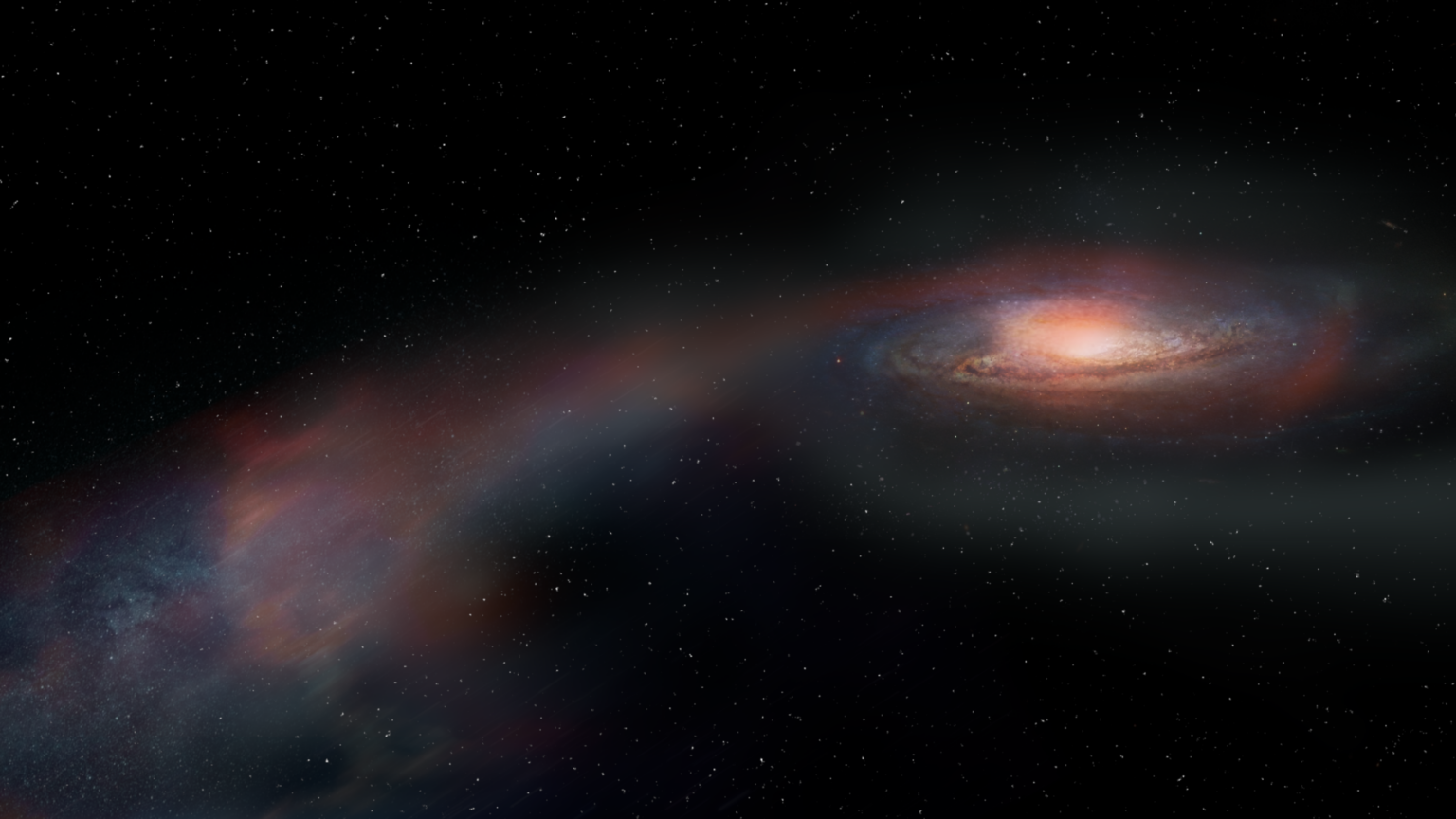During the study of the “dormant” galaxy, an international team of astronomers found that it stopped forming stars not because it ran out of gas, but because of its loss in the process of merging with another galaxy. The find can change the idea of the evolution of the universe.
A galaxy that has lost its gas
From time to time, galaxies collide with each other. Usually this process resembles a giant dance, during which the galaxies circle each other, while their gravity ejects gas and stars from the partner (it can be compared to a kind of “tug of war”). The ejected matter forms streams of material known as tidal tails.

This is exactly what happened to the galaxy SDSS J1448+1010. It was born when the universe was half as old as it is today. Quite recently, as by astronomical standards, it collided with another galaxy and almost completely absorbed it. Mostly, such events lead to powerful bursts of star formation. But in the case of SDSS J1448+1010, the opposite is true. 70 million years ago, the galaxy practically stopped forming new stars.
To unravel the mystery of SDSS J1448+1010, astronomers used the ALMA radio telescope complex and the Hubble orbiting observatory. The result o their observations was a surprise. It turned out that the tidal tails formed during the collision contain a huge amount of material. Its mass is about 10 billion solar masses, which is half of the initial volume of gas in SDSS J1448 +1010.

The loss of such a significant amount of gas should inevitably lead to the cessation of all star formation processes. SDSS J1448+1010 actually ran out of fuel needed to form new luminaries.
The mystery of dead galaxies
The find is able to shed light on the history of the evolution of the universe. Astronomers know many dead galaxies inhabited by a large number of old stars. This suggests that in the distant past they could form new luminaries until something stopped this process. Previously, scientists blamed events such as supernova explosions and the activity of supermassive black holes capable of knocking most of the gas out of the galaxy. However, SDSS J1448+1010 demonstrates that galactic collisions can also play an important role.
At the same time, astronomers emphasize that for now SDSS J1448+1010 remains a single example, which is not a valid reason for any global conclusions. Therefore, they plan to study other similar galaxies to understand how widespread this mechanism is.
Based on materials from https://www.almaobservatory.org

